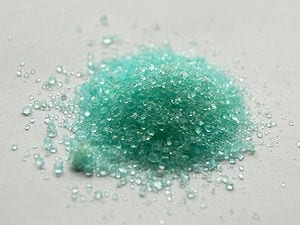Safe and inexpensive iron catalysts provide a ‘greener’ alternative to typical pharmaceutical production methods
More than one-quarter of all known pharmaceuticals contain the chemical group known as amides: carboxylic acid derivatives derived from ammonia or amines. Most methods for synthesizing amides, however, are inefficient and use hazardous reagents. New work from Anqi Chen and co-workers at the A*A*STAR Institute of Chemical and Engineering Sciences in Singapore promises to make amide chemistry more economical and sustainable than before1. The team has uncovered a way to convert aldehydes and amine salts into amides using iron(II) sulfate — a harmless, inexpensive substance as the catalyst to perform this transformation efficiently and with little waste.
Most alternative methods to produce amide molecules use expensive noble metal catalysts such as palladium and ruthenium, which are incompatible with industrial demands for cost-efficiency. Funded by a GlaxoSmithKline (GSK)–Singapore Economic Development Board (EDB) endowment on sustainable drug manufacturing, the researchers investigated a different approach known as ‘direct oxidative amidation’. This method couples an aldehyde and an amine salt in the presence of a catalyst and an oxidant, generating an amide in one step.
Nontoxic and cheap catalysts with sufficient chemical activity for amide transformation are hard to find. To identify an efficient and inexpensive catalyst, the team screened a range of iron compounds and discovered that iron(II) sulfate (see image), a supplement for anemia that costs less than a dollar per kilogram, has strong potential to catalyze amide formation from aldehydes with amine salts.
Apart from the environmentally benign iron catalyst, the transformation uses an inexpensive oxidant known as tert-butyl hydroperoxide and very cheap calcium carbonate, the main composition of limestone, as a base. By combining these inexpensive ingredients together, the researchers achieved excellent amide yields under conditions convenient for both laboratory and industrial operations.
Further experiments revealed the versatility of this amide synthesis. A range of amine salts and aldehydes with different structural and electronic features could be transformed into amides with good-to-excellent yields. Importantly, salts derived from natural amino acids such as valine and proline also underwent oxidative amidation without disrupting their chirality or ‘handedness’ — a critical structural phenomenon for drug molecules and peptides.
via Agency for Science, Technology and Research (A*STAR)
The Latest Streaming News: Drug manufacture updated minute-by-minute
Bookmark this page and come back often
Latest NEWS
Latest VIDEO








